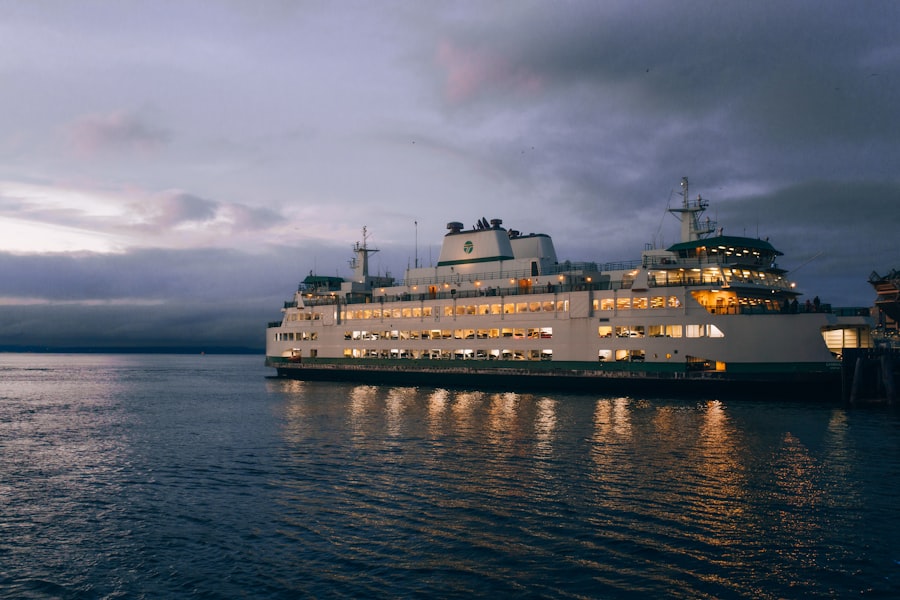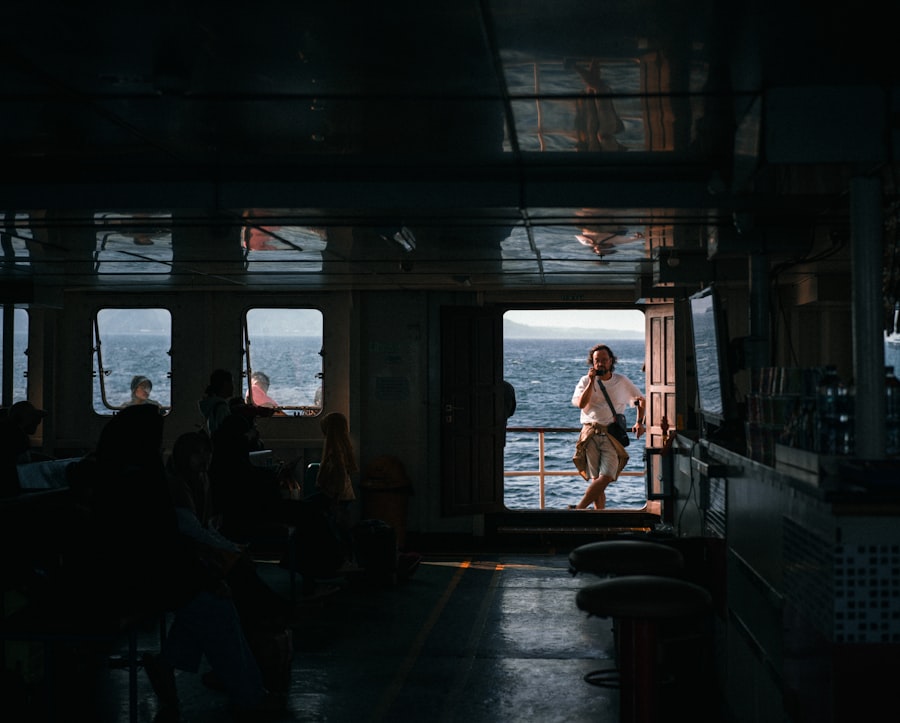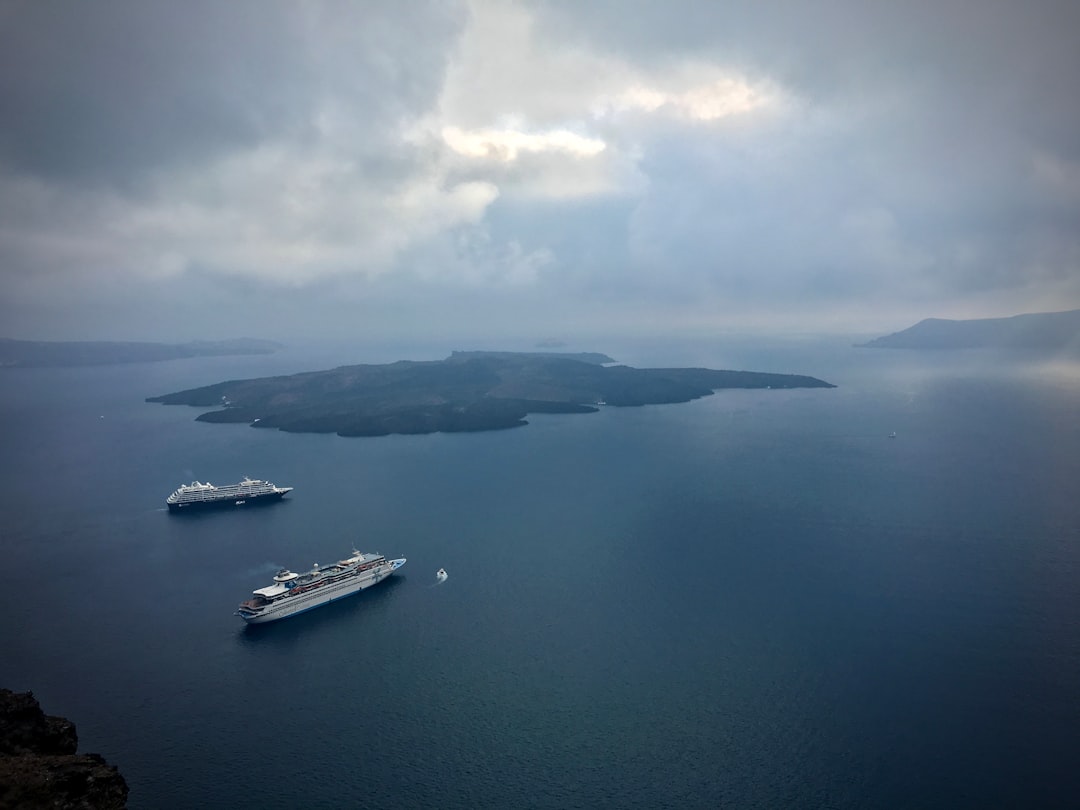Cruising the Drake Passage is often regarded as one of the most formidable maritime journeys in the world. This stretch of water, which lies between the southern tip of South America and Antarctica, is notorious for its unpredictable weather and turbulent seas. The passage is characterized by strong currents and high winds, which can create challenging conditions for even the most seasoned sailors.
The convergence of the Atlantic and Pacific Oceans in this region results in a unique set of oceanic dynamics that can lead to sudden storms and rough waters, making it a daunting prospect for many cruise travelers. Navigating the Drake Passage requires not only a sturdy vessel but also a crew that is well-versed in handling the unpredictable nature of the sea. Many cruise lines equip their ships with advanced technology and experienced personnel to ensure passenger safety during the crossing.
However, despite these precautions, travelers must be prepared for the possibility of seasickness and discomfort. The challenge of cruising the Drake Passage is not merely physical; it also tests the mental fortitude of those on board, as they confront the raw power of nature in one of its most untamed forms.
Key Takeaways
- Cruising the Drake Passage presents a challenge due to its reputation for rough seas and unpredictable weather
- The appeal of cruising the Drake Passage lies in the opportunity to experience one of the most remote and untouched regions on Earth
- The history of cruising the Drake Passage dates back to the age of exploration, with famous explorers like Sir Francis Drake and Ferdinand Magellan navigating its waters
- The wildlife of the Drake Passage is diverse and abundant, with opportunities to see penguins, seals, whales, and a variety of seabirds
- The weather and conditions of the Drake Passage can be harsh and unpredictable, with strong winds and rough seas being common
- Tips for cruising the Drake Passage include packing warm and waterproof clothing, taking seasickness medication, and being prepared for the possibility of itinerary changes
- The best times to cruise the Drake Passage are during the austral summer months of November to March, when the weather is relatively milder
- The experience of cruising the Drake Passage is one of awe and wonder, as passengers are surrounded by stunning landscapes and unique wildlife
- The advantages of cruising the Drake Passage include the opportunity for unparalleled wildlife viewing and the sense of adventure that comes with crossing such a legendary body of water
- The disadvantages of cruising the Drake Passage include the potential for rough seas and seasickness, as well as the high cost and limited accessibility for some travelers
- The future of cruising the Drake Passage is likely to see continued interest from adventurous travelers seeking to explore the remote and pristine wilderness of Antarctica
The Appeal of Cruising the Drake Passage
Despite its challenges, the allure of cruising the Drake Passage is undeniable. For many adventurers, the journey represents a rite of passage, a chance to traverse one of the last great frontiers on Earth. The passage serves as a gateway to Antarctica, a land of breathtaking beauty and stark contrasts.
Travelers are drawn to the idea of crossing this legendary body of water, where they can witness the convergence of two mighty oceans and experience the thrill of venturing into one of the most remote regions on the planet. Moreover, the appeal extends beyond the journey itself; it encompasses the promise of discovery and exploration. Many cruise itineraries include stops at various points along the Antarctic Peninsula, allowing passengers to engage with stunning landscapes, unique wildlife, and rich ecosystems.
The anticipation of encountering icebergs, glaciers, and diverse marine life adds to the excitement, making the Drake Passage not just a means to an end but an integral part of an unforgettable adventure.
The History of Cruising the Drake Passage

The history of cruising the Drake Passage is steeped in exploration and discovery. The passage was named after Sir Francis Drake, an English sea captain who navigated these waters in the late 16th century during his circumnavigation of the globe. His journey marked one of the earliest European explorations of this treacherous route, paving the way for future adventurers and explorers who sought to uncover the mysteries of Antarctica.
In the centuries that followed, the Drake Passage became a focal point for scientific research and exploration. The early 20th century saw numerous expeditions aimed at studying the unique geography and ecology of Antarctica. These voyages laid the groundwork for modern-day cruising in the region, as they provided valuable insights into navigation and safety in these challenging waters.
Today, cruise lines honor this rich history by offering itineraries that celebrate both adventure and education, allowing passengers to connect with the legacy of those who came before them.
The Wildlife of the Drake Passage
| Species | Population | Conservation Status |
|---|---|---|
| Wandering Albatross | 10,000 pairs | Vulnerable |
| Antarctic Fur Seal | 3-4 million | Least Concern |
| Blue Whale | Unknown | Endangered |
| Antarctic Petrel | Unknown | Least Concern |
One of the most captivating aspects of cruising the Drake Passage is the opportunity to observe its diverse wildlife. The waters are teeming with life, from majestic whales to playful seals and a variety of seabirds that soar above. Passengers often find themselves in awe as they spot humpback whales breaching or orcas gliding gracefully through the waves.
The passage serves as a vital feeding ground for these marine mammals, making it an ideal location for wildlife enthusiasts. In addition to marine life, the surrounding islands and coastal areas are home to numerous bird species, including albatrosses and petrels. These birds are known for their impressive wingspans and remarkable ability to glide over vast distances without flapping their wings.
For many travelers, witnessing these creatures in their natural habitat is a highlight of their journey through the Drake Passage. The rich biodiversity found in this region underscores its ecological significance and enhances the overall experience for those who venture into its waters.
The Weather and Conditions of the Drake Passage
The weather conditions in the Drake Passage are notoriously unpredictable, contributing to its reputation as one of the most challenging maritime routes. The region experiences frequent storms and rapidly changing weather patterns, which can lead to rough seas and high winds. Travelers must be prepared for a range of conditions, from calm waters to turbulent swells that can reach heights of several meters.
This variability is largely due to the confluence of different ocean currents and atmospheric systems that converge in this area. Understanding these weather patterns is crucial for anyone considering a cruise through the Drake Passage. While modern vessels are equipped to handle adverse conditions, passengers should remain vigilant and adaptable.
It is advisable for travelers to stay informed about weather forecasts and be prepared for potential delays or changes in itinerary due to unfavorable conditions. Embracing this uncertainty can enhance the sense of adventure that comes with cruising this remarkable passage.
Tips for Cruising the Drake Passage

For those planning to cruise through the Drake Passage, preparation is key to ensuring a smooth experience.
Layered clothing is essential, as temperatures can fluctuate dramatically throughout the day.
Waterproof gear is also recommended, as splashes from waves can occur even on calmer days. Additionally, it is wise for passengers to consider motion sickness remedies before embarking on their journey. Many cruise lines offer advice on medications or natural remedies that can help alleviate symptoms associated with seasickness.
Staying hydrated and consuming light meals can also contribute to overall comfort during the crossing. By taking these precautions, travelers can enhance their enjoyment of this remarkable adventure while minimizing discomfort.
The Best Times to Cruise the Drake Passage
Timing plays a crucial role in planning a successful cruise through the Drake Passage. The peak season for Antarctic cruises typically runs from late October to early March when weather conditions are generally more favorable. During this period, temperatures are milder, and wildlife activity is at its height, providing ample opportunities for sightings.
Travelers should also consider that each month offers unique experiences. For instance, late October and early November mark the beginning of summer in Antarctica when ice begins to melt, revealing stunning landscapes. December and January are ideal for wildlife enthusiasts, as many species are actively breeding during this time.
By understanding these seasonal variations, travelers can choose a time that aligns with their interests and maximize their experience in this extraordinary region.
The Experience of Cruising the Drake Passage
Cruising through the Drake Passage is an experience unlike any other, blending adventure with awe-inspiring natural beauty. As passengers embark on their journey, they are greeted by panoramic views of vast ocean expanses and dramatic coastlines that evoke a sense of wonder. The thrill of crossing this legendary passage is palpable as travelers gather on deck to witness their surroundings transform with each passing wave.
Onboard activities further enrich this experience, with lectures from naturalists and experts who share insights about Antarctica’s unique ecosystems and history.
As they navigate through icy waters and encounter breathtaking landscapes, travelers forge lasting memories that will resonate long after their journey has ended.
The Advantages of Cruising the Drake Passage
Cruising the Drake Passage offers numerous advantages that appeal to adventurous travelers seeking unique experiences. One significant benefit is access to some of Earth’s most pristine environments. The passage serves as a gateway to Antarctica’s breathtaking landscapes, including towering glaciers and expansive ice fields that captivate visitors with their sheer beauty.
Additionally, cruising provides an opportunity for immersive wildlife encounters that are difficult to replicate elsewhere. Passengers have a chance to observe diverse marine life up close while learning about conservation efforts aimed at protecting these fragile ecosystems. This combination of adventure and education enhances travelers’ appreciation for nature while fostering a deeper understanding of environmental issues facing our planet.
The Disadvantages of Cruising the Drake Passage
While there are many advantages to cruising through the Drake Passage, there are also some disadvantages that potential travelers should consider. One primary concern is the potential for rough seas and adverse weather conditions that can lead to discomfort or seasickness among passengers. Even with modern vessels designed for stability, unpredictable weather can create challenges during crossings.
Moreover, some travelers may find that itineraries can be subject to change due to weather-related delays or safety concerns. This unpredictability can be frustrating for those who have specific destinations or activities in mind. It is essential for prospective cruisers to approach their journey with flexibility and an open mind, recognizing that part of the adventure lies in embracing uncertainty.
The Future of Cruising the Drake Passage
As interest in Antarctic exploration continues to grow, so too does the future of cruising through the Drake Passage. Advances in technology are enhancing safety measures and improving navigation capabilities in these challenging waters. Cruise lines are increasingly investing in eco-friendly practices aimed at minimizing environmental impact while providing unforgettable experiences for travelers.
Furthermore, there is a growing emphasis on sustainable tourism practices within this fragile ecosystem. As awareness about climate change and its effects on polar regions increases, cruise operators are taking steps to educate passengers about responsible travel behaviors that protect wildlife and habitats. This commitment to sustainability will play a crucial role in shaping the future of cruising through the Drake Passage, ensuring that future generations can continue to explore this remarkable region while preserving its natural beauty for years to come.
Cruise ships do indeed navigate the challenging waters of the Drake Passage, a notorious stretch of sea between the southern tip of South America and Antarctica. This route is known for its rough seas and unpredictable weather, making it a thrilling yet daunting experience for travelers. For those interested in learning more about the adventures and challenges of navigating the Drake Passage, you can explore a related article on the topic by visiting this page. This article provides insights into the experiences of cruise ships and their passengers as they embark on this remarkable journey.
WATCH NOW! Drake Passage: Earth’s Deadliest Waters Revealed
FAQs
What is the Drake Passage?
The Drake Passage is the body of water between the southern tip of South America and the South Shetland Islands of Antarctica. It is known for its rough seas and challenging sailing conditions.
Do any cruise ships go through the Drake Passage?
Yes, some cruise ships do navigate through the Drake Passage as part of their itineraries to Antarctica. However, it is important to note that the passage is known for its rough seas and can be a challenging experience for passengers.
What should passengers expect when cruising through the Drake Passage?
Passengers should expect rough seas and potentially stormy weather when cruising through the Drake Passage. It is advisable to be prepared for motion sickness and to follow any safety instructions provided by the cruise ship.
Are there any alternatives to cruising through the Drake Passage?
Some cruise itineraries offer the option to fly from South America to Antarctica, bypassing the Drake Passage. This can be a more comfortable and time-efficient alternative for passengers who are concerned about the rough seas of the passage.
